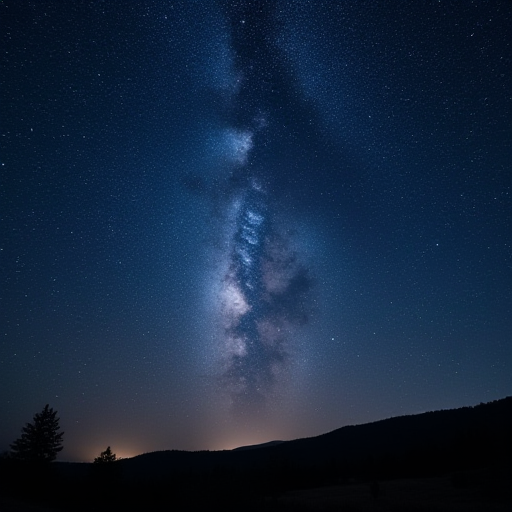
Why Do Stars Twinkle?
The enchanting twinkling of stars has inspired poets, musicians, and dreamers for centuries. While it may seem like magic, the phenomenon has a logical explanation rooted in atmospheric science and astrophysics. This article delves into the reasons why stars twinkle, exploring the interplay of light, atmosphere, and perception.
The Science Behind Twinkling
Atmospheric Disturbance
The twinkling of stars, scientifically known as stellar scintillation, is primarily caused by the Earth's atmosphere. As starlight travels through space, it is relatively undisturbed until it reaches the Earth's atmosphere. Here, the light encounters various layers of air with differing temperatures and densities.
The Earth's atmosphere is turbulent, meaning it is constantly in motion. This turbulence causes the air to act like a dynamic lens, refracting (bending) the light. As the light's path is bent, it appears to flicker or twinkle to an observer on the ground. The greater the atmospheric disturbance, the more pronounced the twinkling.
Refraction and Turbulence
Refraction is the bending of light as it passes through mediums of different densities. In the case of starlight, as it passes through the Earth's atmosphere, the varying air densities along its path cause the light to bend in different directions. This bending changes the apparent position of the star slightly and rapidly, creating the illusion of a star that seems to change brightness and position.
The Role of Distance and Size
Stars are incredibly far away from Earth, making them point sources of light in the night sky. This means they appear as single points of light rather than extended objects. Because they are point sources, even minor atmospheric disturbances can cause noticeable twinkling.
In contrast, planets in our solar system, such as Venus or Jupiter, are much closer and appear as discs rather than points. This means that the light from these bodies is less affected by atmospheric turbulence, resulting in a steadier appearance with little to no twinkling.
Factors Influencing Twinkling
Altitude and Weather Conditions
The amount of twinkling can vary based on the altitude of the stars and local weather conditions. Stars closer to the horizon appear to twinkle more because their light has to pass through a thicker layer of the atmosphere compared to stars directly overhead. Additionally, weather conditions such as wind, temperature gradients, and humidity can enhance atmospheric turbulence, increasing twinkling.
Light Pollution
In areas with significant light pollution, artificial lights can interfere with the observation of stars, affecting their visibility and apparent twinkling. However, light pollution does not directly cause twinkling; it merely reduces the ability to observe the natural phenomenon clearly.
Cultural and Astronomical Significance
Throughout history, the twinkling of stars has played a significant role in various cultures. For example, in some traditions, twinkling stars were thought to be the souls of ancestors watching over the living. In others, the twinkling was interpreted as messages from the gods.
Astronomically, understanding and accounting for twinkling is important for astronomers. Twinkling can affect the accuracy of telescopic observations, which is why many observatories are located at high altitudes where the atmosphere is thinner, reducing the effect of scintillation.
Conclusion
The twinkling of stars is a captivating natural phenomenon caused by the interaction of starlight with Earth's turbulent atmosphere. This atmospheric refraction and the immense distance of stars from Earth combine to create the beautiful flickering effect observed on clear nights. Next time you gaze at the night sky, you'll know that the stars' twinkling is not just a poetic dance but a testament to the complex dynamics of our planet's atmosphere and the vastness of space.
